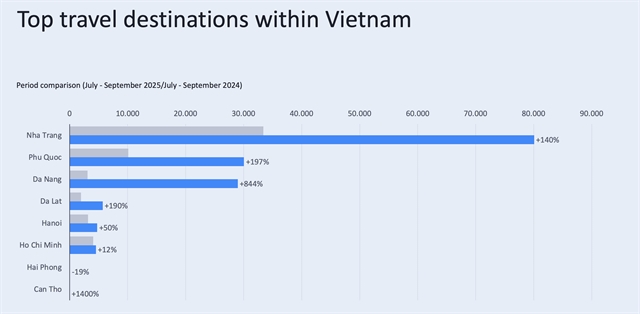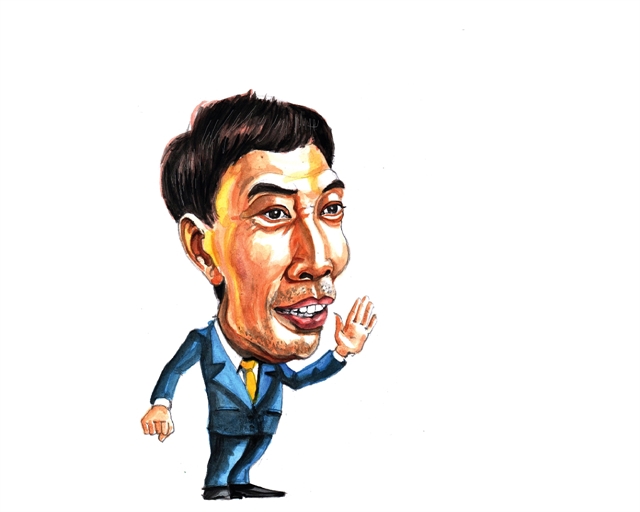 Economy
Economy

COVID-19 has been deemed a catalyst for investors to take the 'China plus one' strategy into more significant consideration and the trend of shifting manufacturing bases to Việt Nam has recently picked up pace.

|
Võ Trí Thành*
Over the past few decades, many companies worldwide have come to China, seeking a place to set up production bases and do business as they were lured by the country’s low labour costs and enormous domestic consumer market, allowing the country to become a global manufacturing hub.
However, since around 2010, there has been a noticeable shift in foreign direct investment flow, which is called the 'China plus one' strategy.
The phrase 'China plus one' refers to a strategy in which companies try to diversify risks of concentrating their manufacturing operations in China by opening factories in at least one country.
The strategy has been around for many years as China has entered a phase of restructuring its economic growth model towards focusing more strongly on domestic demand, rather than boosting growth by exports and trade, and the country has gradually lost its comparative advantages from other Asian countries due to rising production costs, especially labour costs.
At the end of 2018, the strategy was reactivated as investors sought to reduce risks caused by political tensions between China and the US, which originated from the tit-for-tat trade dispute. The risk of disruption of global supply chains has become more apparent. Technological advances, particularly digital technology, have also forced investors to change value chain strategies. Việt Nam has been recognised as one of the potential candidates for new production facilities.
Since the coronavirus pandemic hit and has claimed nearly 400,000 lives and disrupted global production and distribution systems, investors can see more clearly than ever the consequences of a value chain strategy depending too much on one market.
Under these circumstances, COVID-19 has been deemed a catalyst for investors to take not only the 'China plus one' but also 'investment withdrawing in China' strategy into more significant consideration and the trend of shifting manufacturing bases to Việt Nam has recently picked up pace.

|
| No Title |
Why Việt Nam?
Việt Nam has long been an attractive destination of investment for foreign investors. Not only located in a dynamic region, but the country also has good conditions in terms of logistics for trade, especially its proximity to China.
In the 'China plus One Strategy in Vietnam' report released by Dezan Shira & Associates in 2018, experts said: “By situating manufacturing cost centres close to traditional hubs in mainland China, investors can reduce costs with limited interruption or delays to currently existing supply chains.”
Besides, Việt Nam is said to have a state of manufacturing similar to that found in China 10 or 15 years ago when low production costs and labour-intensive manufacturing acted as a magnet for foreign investment.
In terms of labour costs, Vietnamese workers’ wages are only half that of Thailand and Malaysia, meanwhile, the quality of human resources has been improved with more tech-savvy workers.
In terms of land rent, although industrial park land rent in Việt Nam rose sharply in 2019, the average price was just US$103.5 per square metre, the second-lowest in the region, only higher than that of Myanmar, according to a report of VNDirect Securities Corporation.
VNDirect also pointed out that Việt Nam reduced corporate income tax from 22 per cent to 20 per cent in 2016 for all domestic and foreign companies to increase production attraction. Common tax incentives for firms in industrial zones include tax exemptions for two to four years, tax breaks for three to 15 years, and import tax exemptions.
Though the results brought by the economic reform process have not been as great as hoped, Việt Nam has still seen a lot of improvements in its business and investment environment.
Moreover, while maintaining political stability, Việt Nam has integrated more deeply and widely into the global economy by joining a series of free trade agreements, including the Comprehensive and Progressive Trans-Pacific Partnership (CPTPP).
The European-Việt Nam Free Trade Agreement (EVFTA) is also expected to be approved by the 14th National Assembly in its ongoing ninth meeting. Under the agreement, tax imposed on exports from Việt Nam to EU will be eliminated as soon as EVFTA takes effect or shortly thereafter (maximum seven years). Thanks to the EVFTA, Việt Nam’s revenue from exports to the EU is forecast to surge by 44 per cent by 2030.
Last but not least, that Việt Nam has been hailed as one of the countries most successful in controlling the COVID-19 outbreak at low cost, as well as its assistance and provision of medical equipment and face masks to other countries in their fight against the pandemic have helped raise investors’ confidence. This is a good opportunity for Việt Nam to attract investment and recover the economy, creating momentum for long-term and sustainable development.
Challenges ahead and solutions
To prepare for a new investment wave, in September last year, the Politbureau adopted its first-ever resolution on orientations to perfect institutions and policies for and improve the quality and efficiency of foreign investment until 2030.
Under the resolution, the country will aim to attract foreign investment in a selective manner, focusing on quality, efficiency, technology and environmental protection. Priority will be given to foreign direct investment (FDI) projects that use advanced technology and modern management with high added value, bringing spillover effects to Vietnamese enterprises, especially small and medium-sized enterprises; and the projects must be able to connect to the global production and supply chain.
Despite the advantages mentioned above, Việt Nam is not without its share of challenges.
Firstly, many localities in Việt Nam are under pressure of reaching high growth rates, so they have a large demand for capital. Therefore, local authorities are likely to rush licensing projects without carrying out a full assessment of their investment quality and social, economical and environmental impacts.
Secondly, Việt Nam needs to create a healthy, fair competitive environment and have policies suitable with international commitments to spur the growth of Vietnamese enterprises and supporting industries in particular.
Thirdly, Việt Nam should not compete with other countries to court more foreign capital by only offering investment incentives, as this can distort resource allocation and will not have a meaningful impact in the long run. The country will be more attractive to foreign investors if it can correct its weaknesses and shortcomings, such as improving the capacity of capital absorbency, perfecting logistics infrastructure, upgrading workers’ skills and ability, and reforming institutions.
While some changes can't happen overnight, institutional improvement and reforms must be carried out drastically and quickly.
While presiding over a meeting on FDI late May, Prime Minister Nguyễn Xuân Phúc agreed to establish a special task force, led by Planning and Investment Minister Nguyễn Chí Dũng, that will help the country prepare for a new wave of FDI inflows in the post-COVID-19 period.
The main objective of the task force is to fix investment bottlenecks, approach potential investors looking for new destinations and support those that are having difficulties in Việt Nam.
According to the PM, given that FDI is a critical part of the economy, it is essential for Việt Nam to take advantage of a shift in global investment capital flow. By combining the strength of both the local and foreign investment sectors, Việt Nam will be able to create a development leapfrog.
* Võ Trí Thành is a senior economist at the Central Institute for Economic Management (CIEM) and a member of the National Financial and Monetary Policy Advisory Council. The holder of a doctorate in economics from the Australian National University, Thành mainly undertakes research and provides consultation on issues related to macroeconomic policies, trade liberalisation and international economic integration. Other areas of interest include institutional reforms and financial systems.